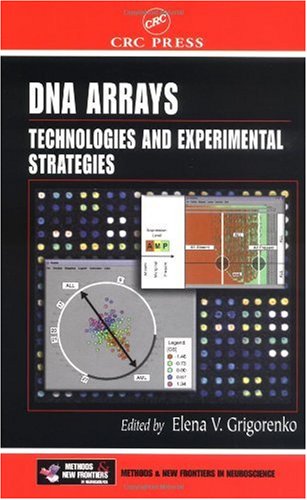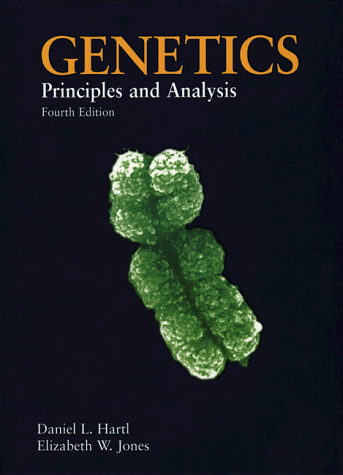Grigorenko E.V.0-8493-2285-5
Table of contents :
DNA Arrays: Technologies and Experimental Strategies……Page 1
Series Preface……Page 3
Preface……Page 4
Editor……Page 5
Contributors……Page 6
Contents……Page 9
Table of Contents……Page 0
1.1 DNA microarrays: method development……Page 11
1.2 Evolution of the pin design……Page 13
1.3 Evolution of the DNA carriers or supports……Page 14
1.4 Labeling……Page 15
1.5 Hybridization……Page 16
1.6 Outlook and challenges……Page 17
References……Page 18
Contents……Page 20
2.2 Role of Hybridization Arrays in Functional Genomics……Page 21
2.3 Strategic Considerations in Array Experimental Design……Page 23
2.3.2 Post hoc Confirmation of Changes……Page 24
2.3.4 Bioinformatics……Page 25
2.4.1 Sample Collection……Page 26
2.4.2.1 Threshold Sensitivity……Page 28
2.4.3 Post hoc Confirmation……Page 29
2.4.4.1 Data Analysis Basics……Page 30
2.5 Conclusion and Future Directions……Page 31
References……Page 32
3.2 Advantages and disadvantages of oligonucleotide arrays……Page 34
3.3 Array fabrication technology……Page 35
3.4 Probe design considerations……Page 37
3.5 Hybridization and detection……Page 39
3.6 Data quality and validation……Page 41
3.7 Future Work and Summary……Page 44
References……Page 46
4.1 Introduction……Page 48
4.2 Background……Page 49
4.3 Electrochemistry……Page 51
4.4 Probe Immobilization……Page 54
4.5 Molecular Biology……Page 57
4.6 Microfabrication……Page 59
4.6.1 Material Requirements……Page 60
4.6.2 Processing……Page 61
4.6.3 Facilities……Page 62
4.7.1 Instrument Architecture……Page 63
4.7.2 Instrument Operation……Page 65
4.7.3 Data Analysis……Page 66
References……Page 67
5.1 Introduction……Page 71
5.2.1 SOLUTIONS……Page 72
5.2.4 GENERAL PROTOCOL FOR THE FIRST PCR……Page 74
5.3 Description of the DNA microarrays: the Neurochips……Page 75
5.4 Analysis of gene expression in brain extracts with the Neurochips……Page 77
5.5 Analysis of gene expression in single cells with the Neurochips……Page 79
References……Page 83
Contents……Page 86
6.1.2 Improving the Process……Page 87
6.2.4 Clustering……Page 89
6.3 AnVil Approach to Data Discovery……Page 90
6.4.1 Critical Assessment of Techniques for Microarray Data Analysis December 2000 Meeting……Page 91
6.4.3 Golub and Slonim Approach……Page 92
6.5 The AnVil Approach……Page 93
6.5.1 Metadata Exploration and Visualizations……Page 95
6.5.2 High-Dimensional Data Explorations……Page 97
6.5.3 Pivoted Data……Page 98
6.5.4 Clustering with RadViz……Page 99
6.5.6 Gene Expression Levels Explorations……Page 100
6.5.7 A Visual Classifier……Page 105
6.6.1 Dimensional Reduction……Page 107
6.6.3 Random Gene Selection and PURS……Page 108
6.6.4 Improving the Classifier……Page 111
6.7 Comparison of Results with Results from CAMDA……Page 112
6.8 Conclusion……Page 113
References……Page 115
Contents……Page 132
7.2 Microarray Fabrication Informatics……Page 133
7.2.2 Arraying Strategy and Microarray Design……Page 134
7.3 Microarray Image Analysis……Page 135
7.3.1 Automation in Image Processing……Page 137
7.4 Data Analysis and Visualization Techniques……Page 138
7.4.2 Principal Component Analysis……Page 139
7.4.4 Cluster Analysis……Page 140
7.5.1 Normalization of the Data……Page 142
7.6 A Complete Software Suite for the Microarray Information Process……Page 143
References……Page 144
8.1 Introduction……Page 147
8.2 Solving Biomedical Problems with Microarrays……Page 148
8.3 Selecting Drug Target Candidates……Page 149
8.5 Clustering……Page 152
8.6 Reverse-Engineering……Page 156
References……Page 157
Contents……Page 159
9.3 Hardware for Making Printed Arrayed Libraries……Page 160
9.4 Amplification by Polymerase Chain Reaction (PCR) and Gridding of Library Inserts……Page 161
9.5 Complex Probe Preparation and Hybridization……Page 162
9.6 Image Analysis……Page 163
9.7 Detection of Differentially Expressed Clones……Page 164
9.8.2 In situ Hybridization……Page 167
9.9 Conclusions……Page 169
References……Page 172







Reviews
There are no reviews yet.